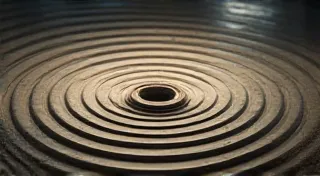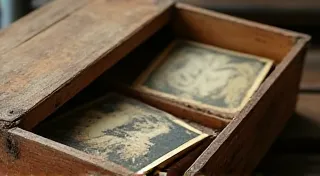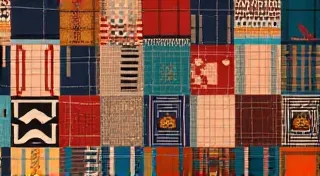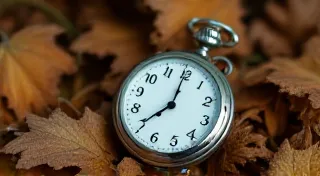Ephemeral Dreams: The Allure of 'Transition' Marbles - Between Generations
There’s a certain melancholy that clings to antique marbles. Not a sadness, exactly, but a poignant awareness of time passed, of tiny hands that once held them, of games played and stories whispered. This feeling intensifies tenfold when contemplating what collectors call “transition” marbles – those fascinating, often elusive pieces that exist between eras, bridging manufacturing processes, artistic styles, and generational play.
Imagine a world slowly shifting from handcrafted artistry to increasingly mechanized production. Picture the skilled artisan, meticulously shaping a marble by hand, then witness the gradual adoption of early machine processes, which inevitably altered the appearance and techniques involved. Transition marbles are born from this shift – they're the whispers of the past echoing into the dawn of new manufacturing techniques. They represent a moment in time, a beautiful collision of old and new.
My own fascination with these “in-between” marbles began years ago, while helping my grandfather clear out his childhood home. He was a quiet man, a carpenter by trade, but he held a treasure trove of memories locked away in dusty boxes. Among those treasures, nestled in layers of tissue paper, were a handful of marbles – not the pristine, flawless specimens one might expect, but something…different. They weren’t readily identifiable as belonging to any particular category. They were flawed, yes, but they possessed a certain charm, a unique character born from that liminal space between traditions.
The Mechanics of Transition: Processes and Their Marks
The late 19th and early 20th centuries were a period of profound industrial change. Early glass marble production started with a craftsman taking a gob of molten glass and skillfully shaping it – sometimes on a rotating lathe, sometimes by hand. These early marbles, often referred to as “cut” or “lathed” marbles, can be beautiful, but they were expensive to produce and naturally, less uniform.
As glassmaking technology advanced, early automated processes began to emerge. These involved molds – initially handmade, then increasingly machine-made. The transition wasn’t a sudden leap; it was a gradual evolution. Early machine-made marbles often retained characteristics of the hand-made era. Perhaps they had subtle irregularities in their shape, a slight “wobble” that a modern machine wouldn't allow, or a unique pattern of streaks – remnants of the way the molten glass was poured into the mold.
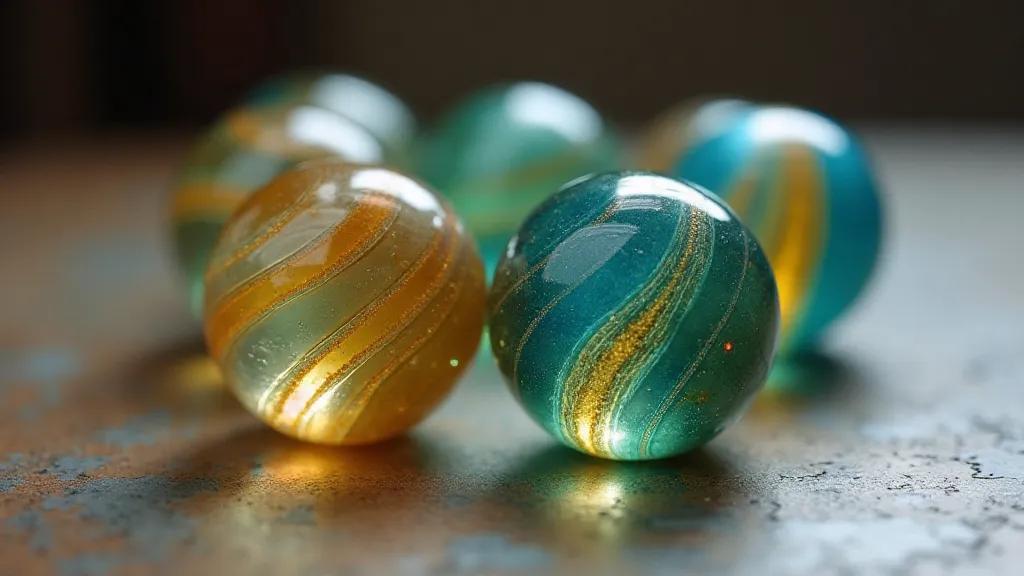
Consider, for instance, the "clutter" marbles, a quintessential example of this transitional period. These were often made in molds, but the molds themselves were often quite crude, leading to a chaotic and visually striking interior design. They represent the move from the controlled artistry of cut marbles to the burgeoning possibilities of machine production, but they lacked the precision of later, fully automated processes. The entire history of marble production, and the cultural significance attached to these small objects, is a fascinating subject, intertwined with stories of folklore and superstition; exploring these beliefs reveals a unique perspective on the human relationship with these fragile spheres – a journey into the world of folklore and superstition surrounding marbles is highly recommended.
Aesthetic Echoes: Styles Bridging Generations
The stylistic shifts are just as compelling as the manufacturing changes. Early marbles often featured simple, geometric patterns – stripes, dots, swirls. As technology advanced, the possibilities for intricate designs expanded. However, even as complex patterns became possible, certain echoes of the earlier aesthetic lingered. The vibrant, almost naive color palettes of the early marbles sometimes appeared in later, more elaborate designs, creating a subtle sense of continuity across generations.
Imagine a child growing up during this transformative era. They might have received a hand-made swirl marble from their grandfather, a tangible connection to a bygone era. Then, as they grew older, they might have received more machine-made marbles, decorated with more intricate designs. The "transition" marbles, those imperfect bridges between those two worlds, would have held a special significance - a reminder of the past, a promise of the future.
The Value of Imperfection: Why Collectors Seek 'Transition' Marbles
Ironically, the imperfections that might have diminished a modern, perfectly formed marble, are precisely what make “transition” marbles so desirable to collectors. They are tangible proof of a specific moment in time, a fleeting glimpse into the ingenuity and artistry of a changing world. Their flaws aren't blemishes; they are stories etched into the glass.
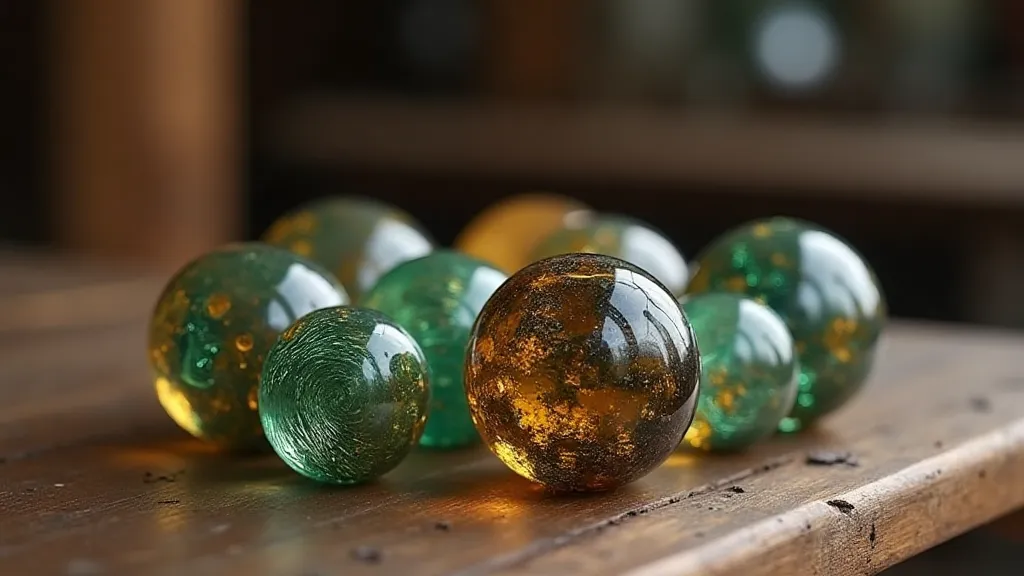
The rarity of these marbles further enhances their appeal. The transitional processes were often short-lived, quickly superseded by more efficient, automated methods. Identifying these marbles often requires a keen eye and a deep understanding of marble manufacturing history – a challenge that only adds to their allure. It’s not simply about having a marble; it’s about possessing a piece of history, a puzzle piece in the larger story of technological and artistic evolution. The ecological impact of such historical production methods also warrants consideration; understanding the resource use and waste generated during this period provides a valuable lens through which to examine the consequences of early industrialization – a deeper dive into the ecological impact of historical marble production is well worth the effort.
Restoration and Preservation: Respecting the Passage of Time
When it comes to "transition" marbles, less is always more. Unlike pristine, flawless specimens, aggressive restoration can actually diminish their value and historical significance. A slight chip or a subtle streak isn't something to be "corrected"; it’s part of the story. Collectors value the authenticity and integrity of these marbles – their imperfections are a testament to their journey through time.
Careful cleaning is, of course, essential. Gentle soap and warm water are often sufficient to remove surface grime. But resist the temptation to polish or aggressively scrub – you risk erasing the subtle nuances that make these marbles so unique.
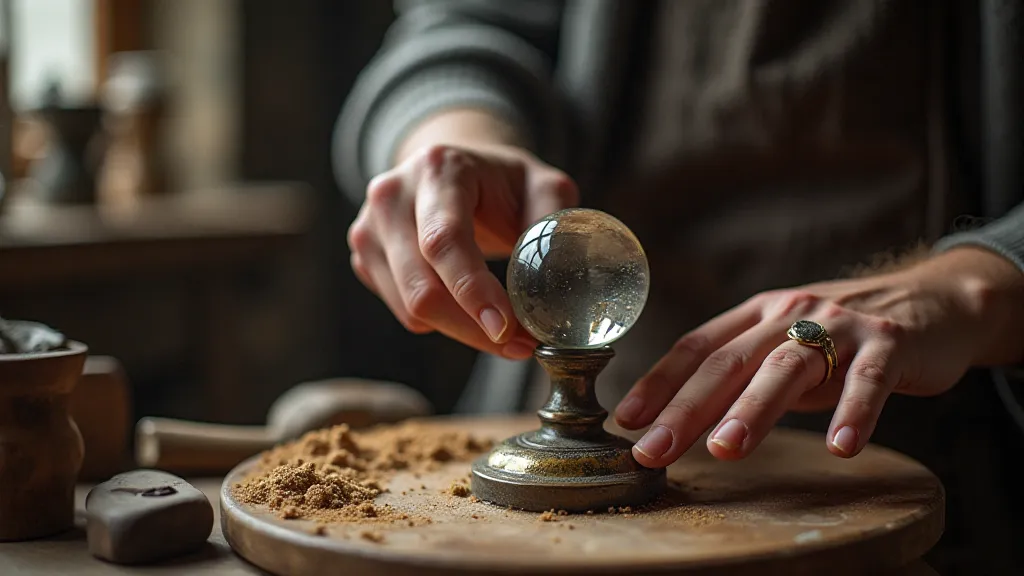
Dating and Identifying Transition Marbles: A Collector's Challenge
The process of identifying and dating transition marbles is a nuanced art, requiring a deep understanding of manufacturing techniques, stylistic evolution, and the history of glassmaking. It's far more complex than simply categorizing marbles based on color or pattern. Understanding the subtle cues – the irregularities in the glass, the unique marks left by early molds, the specific color combinations indicative of particular periods – separates the casual collector from the seasoned expert.
One critical factor is the type of mold used. Early molds were often handmade, resulting in significant imperfections. These imperfections can manifest as thick spots, uneven surfaces, and distinctive swirl patterns visible within the glass. As machine-made molds became more prevalent, these irregularities diminished, but traces of the handmade process often lingered. Examining these “mold marks” provides valuable clues to the marble’s age and origin. Deciphering these manufacturing hallmarks requires understanding the evolution of dating techniques, a fascinating study in itself - a detailed look at dating antique marbles through manufacturing styles will prove invaluable for any serious collector.
Beyond the Object: The Sentimental Value of Transition Marbles
For many collectors, the allure of transition marbles extends beyond their rarity and historical significance. They represent a connection to the past, a tangible link to the generations who came before. These marbles were often cherished toys, passed down through families, carrying with them stories of childhood games, of shared laughter, and of enduring memories. They aren't just objects; they are vessels of emotion, echoing the joys and sorrows of bygone eras.
More Than Just Toys: Echoes of a Vanished World
“Transition” marbles are more than just pretty glass objects. They are tangible links to a bygone era, to a time of profound change and incredible ingenuity. They are whispers of childhood games, of familial connections, of a world slowly transforming before our eyes. They remind us that even the smallest, seemingly insignificant objects can hold within them a wealth of history and emotion. As collectors, we are not simply acquiring marbles; we are safeguarding stories, preserving memories, and keeping alive the echoes of a vanished world. And that, perhaps, is the true allure of these ephemeral dreams – these beautiful bridges between generations. The vibrancy of the colors themselves can reveal significant details about the marble's origin and age; understanding the subtle variations and nuances within these palettes is an art in itself – a deeper understanding of deciphering the soul of a hand-swirled marble will significantly enhance your appreciation of these remarkable objects.

